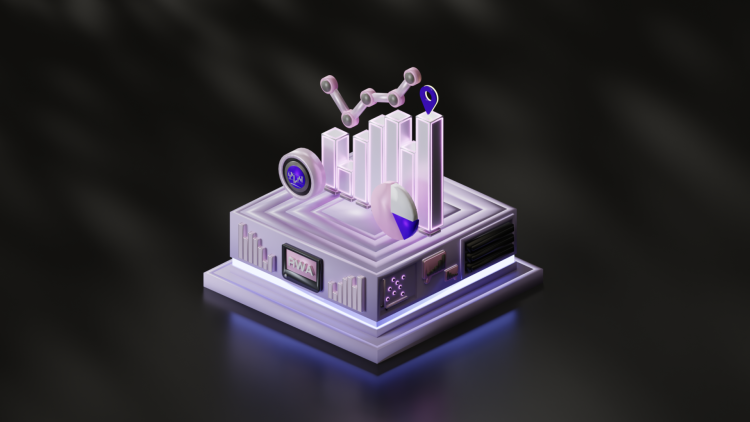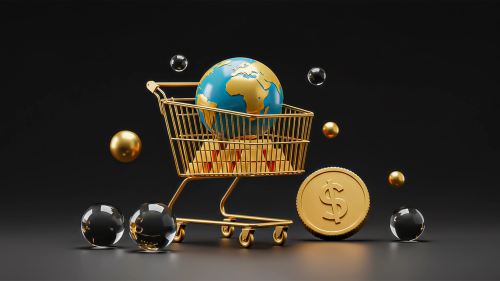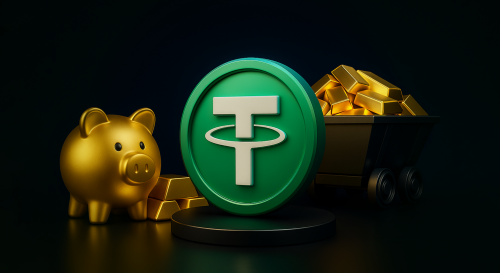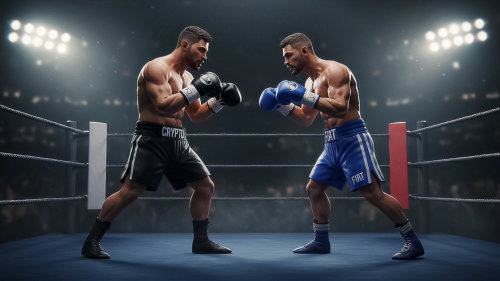Crypto is too abstract. Theory. An untouchable digital representation of value, perhaps even less tangible than FIAT currency (that’s right, I said it!).
But wait! Before you rage-quit this article, let’s explore the sector that is transforming this common crypto complaint. Entrepreneurs, investors, and developers alike have pivoted to bringing real world assets onchain with the goal of improving financial access, security, and transparency.
If you’ve had the crypto itch, the curious drive asking ‘where’s the excitement in Web3’ because you haven’t had a compelling reason to build in the space, this might be your sign. Below, I’m going to unpack five sectors bringing real world assets (RWA tokens) onchain and why they’re the next big thing happening now.
1. Stablecoins
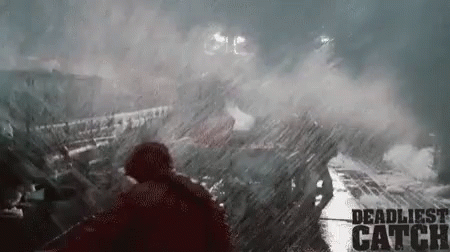
If you’re allergic to big market shifts that toss investors around like the fishermen in The Deadliest Catch, this asset is for you. Stablecoins are the antithesis of volatility — they hold their value by anchoring to a stable FIAT currency.
Current hot RWA tokens include:
- USDC (Circle) — Market Cap $64.35B
- USDT (Tether) — Market Cap $163.88B
- DAI (MakerDAO) — Market Cap $5.36B
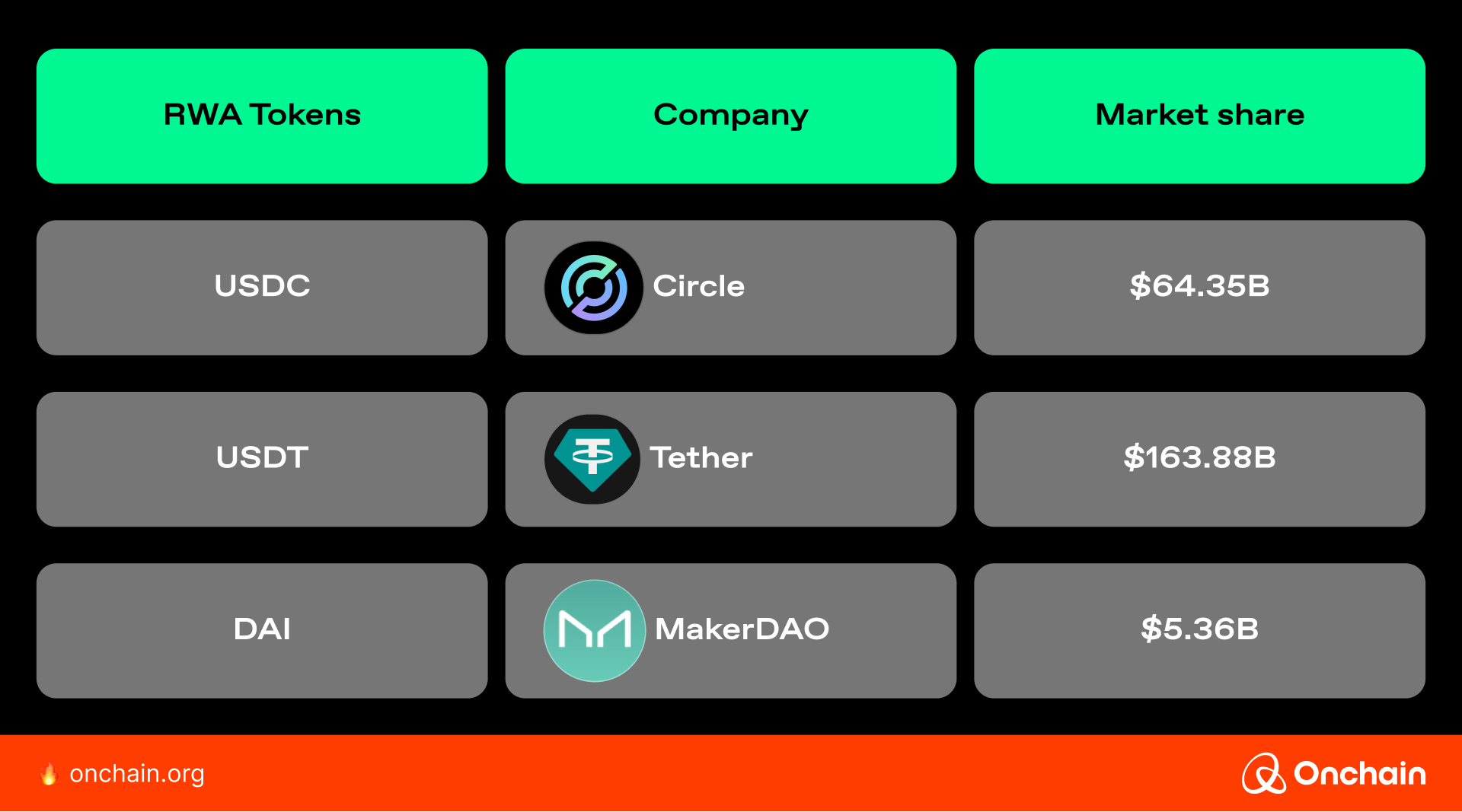
The cool thing is that stablecoins make crypto a safer investment. They solve for the market shakes and, thanks to their enormous popularity (especially in emerging markets), they are widely accepted across platforms and wallets.
Stablecoins also make great remittance tools for global businesses. They hold value and can be sent across 70 countries (and counting).
They also make a great investment. The stablecoin market is ever expanding, and programs like Nexo provide excellent return on investment for saving and staking. So, what are you waiting for?
2. Tokenized U.S. Treasuries
What if anyone could easily trade and invest in U.S. Treasuries? Typically, to own a stake in U.S. Treasuries, one must be a U.S. resident or go through a lengthy process of working with a broker who helps trade securities from abroad.
Tokenized U.S. Treasuries, however, can be bought and sold by anyone, at any time, from anywhere, with a big bonus of added transparency and trust. All you need is a wallet.
U.S. Treasuries become tokenized when an individual or entity purchases the treasury and holds it in reserve as a “pool.” They then issue the tokens (aka. T-Bills) as representatives of the value of that pool, which rises and falls in value with the treasuries it represents. This is a great example of real-world assets (RWA) tokenization in action.
Interested in building a portfolio in T-Bills and other global treasury assets? Check out Onda Finance. It facilitates pool development for projects that wish to tokenize real-world assets, as well as offer investment opportunities to individuals.
3. Gold-Backed tokens
Helloooo gold! We hear it all the time: safeguard your savings with gold or precious metals. It’ll hold value even if the world ends!
Okay, but who actually has the basement space (and security) for gold bars?
Not to worry, gold-backed tokens are here. These RWA tokens operate similarly to stablecoins, but instead of being tethered to FIAT currency, their value is tied directly to the value of gold. These coins build on the concept of third-party holdings — except you don’t need a man with a vault holding on to your gold. Your wallet can do it for you! Big bonus: they’re way easier to trade. 😅
Popular gold-backed tokens include:
- PAXG (Paxos) — Market Cap $955.23M
- XAUT (Tether) — Market Cap $828.37M
- GLC (GoldCoin) — Market Cap $331.94K
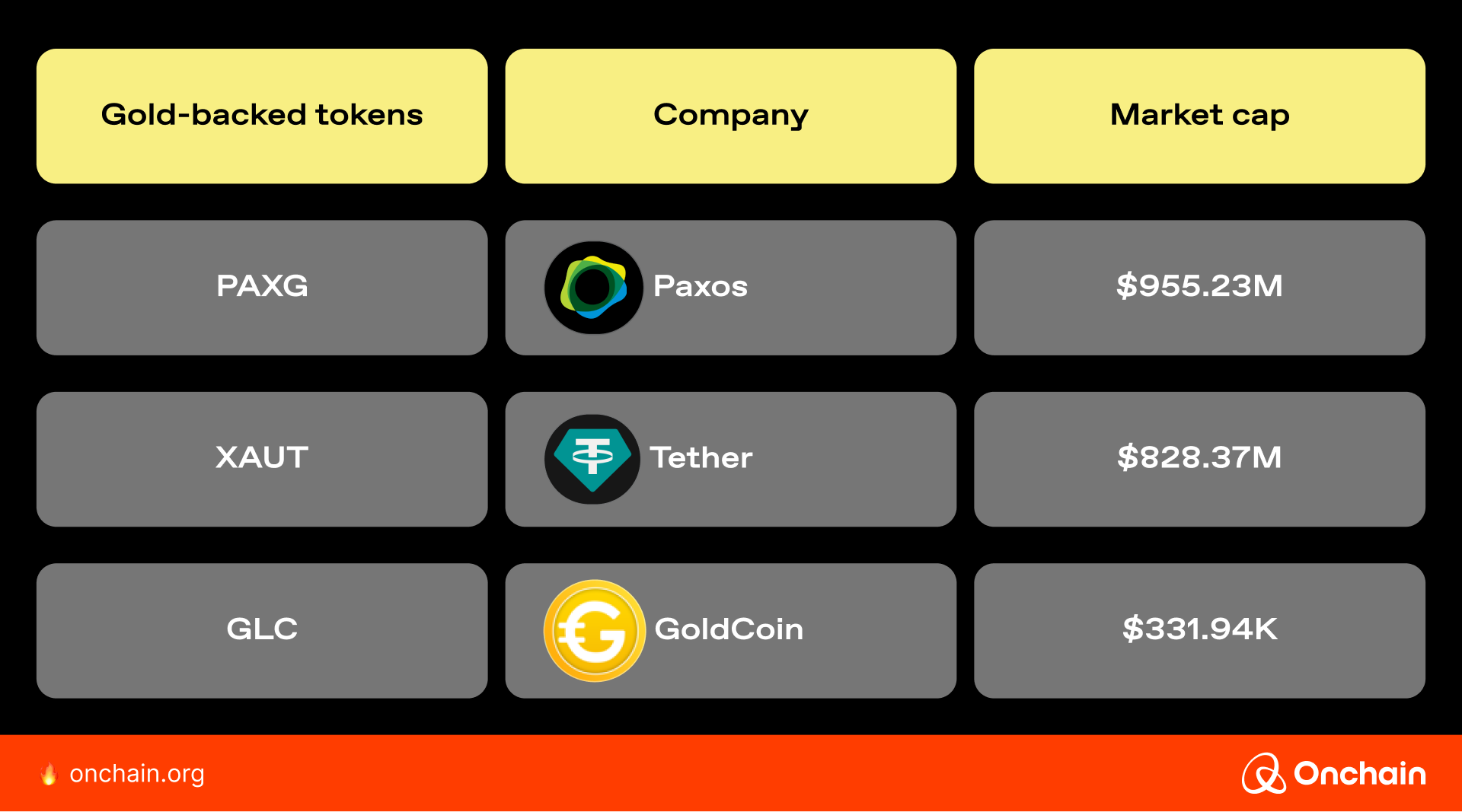
Some gold-backed tokens (like GoldCoin) additionally have zero-percent storage fees, making them even more cost effective for investing. Some wallets also offer storage interest. Even better.
4. Tokenized real estate
If you’ve been considering investing in a REIT but feel the old-school structure is clunky, look no further. Tokenized real estate is lowering the barrier to real estate investing while widening access across borders.
For example, you can purchase a concern in tokenized real estate for only $50 with RealT. No lawyers involved, no 30-day waiting period, no asset verification needed. Anyone can now access the global real estate market and add a liquid asset to their portfolio.
But RealT wasn’t the first. SolidBlock (now DIBS) put the first tokenized real estate onchain in 2018 by minting shares of the St. Regis Hotel in Aspen, CO. The company went on to explore NFT utility for hotel bookings and today offer regulation-compliant tokenization of any asset. All this furthers the accessibility of those who wish to invest in real estate at any level while improving the real estate market for brokers.
5. Tokenized private credit
How many films feature a plucky entrepreneur entering a bank and asking for a loan… only to be denied because the startup leader doesn’t have the right collateral or spending history? Heartbroken, they leave, wondering what to do next.
Private credit was meant to solve that problem, but it still comes with hurdle after hurdle.
That’s where tokenized credit comes in. By bringing loans onchain, the risk to the lender is reduced while widening opportunities for the borrower.
Two excellent use cases are Maple Finance and Centrifuge.
Maple Finance lowers the barrier to entry for would-be lenders by creating a “Pool” into which lenders can deposit tokens for lending. Much like staking, they benefit from the interest paid by the borrowers over time. Equally, the barrier to borrowing is lowered and access is widened.
Centrifuge, on the other hand, is a DAO built to manage real-world assets like loans, investing, and fund development. Its goal is similar to Maple Finance — lower the barrier on all sides, increase security, and make financial products more cost-effective for the users.
Conclusion: Building around tokenized real-world assets
Tokenizing real-world assets is a no-brainer. They make it easier for the individual to access financial services and invest abroad while improving security for product owners.
As you explore investing in or building toward RWA tokenization, check out offerings by projects like Chainlink and Fireblocks. They will get you off the ground and building fast.
As always, don’t forget to check on regulations. We’ve got an overview of regulations for your review in our RWA report to get you started.
